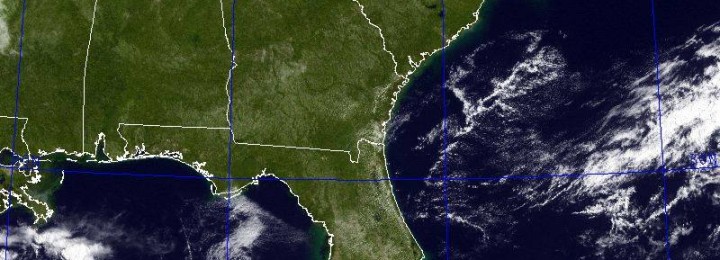Pam Knox
-

The satellite picture this morning showed the Southeast in all its glory, unmasked by clouds. This image, taken from the GOES-East geostationary satellite, is so crisp that you can see river valleys and even the “fall line” cutting through central Georgia, South Carolina and North Carolina. The clear conditions are courtesy of high pressure, which…
-

The Weather Underground blog today discusses what the summer climate is likely to be across the country for the next few months. Generally summer is the hardest time of year to predict, and this year is unusual because of the El Nino which is currently present in the eastern Pacific Ocean. El Nino is usually a winter…
-

EarthSky had an interesting article this week on how a ‘blob’ of unusually warm water in the Pacific has been changing weather patterns for the last year. This pocket of warm water is in the central Pacific and is separate from the warm water along the equator associated with the present El Nino, although the…
Posted in: Climate and Ag in the news -

In February I posted a story about a UGA project to track harmful algal blooms in Southeastern lakes (link). Now that we are entering the heart of the boating and outdoor recreation season, I think it is worth repeating. Scientists at UGA are collecting reports of toxic algae in lakes at https://www.cyanotracker.uga.edu. You can go to…
-

The latest climate outlooks for June and for June-August are now available from NOAA’s Climate Prediction Center. The outlooks show that Florida and the East Coast have a slightly increased chance of warm temperatures in June and most of the Southeast has an increased chance of wet conditions. For the three-month period from June through…
Posted in: Climate outlooks -

The latest National Drought Monitor map is out and shows only a very slight increase in dry conditions across the Southeast. Abnormally dry conditions expanded from 17.7 to 19.0 percent of the Southeast, while moderate D1 drought in the southern tip of Florida also expanded slightly. The dry conditions were reduced in Alabama but expanded…
-

I had the pleasure last week to meet Jerry Adams, a satsuma farmer from near Bainbridge GA. Melissa Griffin, the Assistant State Climatologist for Florida, was with me. Satsumas are one of the most cold-hardy varieties of citrus, and one of several new crops that are being tried in Georgia, including olives. Jerry showed me…
Posted in: Crops